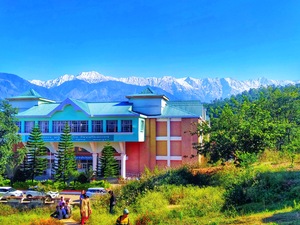-
Postdoctoral Fellow
Jul 2024 – Present, National Centre for Radio Astrophysics – TIFR, Pune, India -
Postdoctoral Fellow
Dec 2023 – Jun 2024, Manipal Centre for Natural Sciences (MCNS), Manipal, India -
Project Associate (Scientific)
Apr 2022 – Oct 2023, ARIES, Nainital, India -
Senior Research Fellow (SRF)
Mar 2020 – Jul 2021, ARIES, Nainital, India -
Junior Research Fellow (JRF)
Mar 2018 – Feb 2020, ARIES, Nainital, India
-
Ph.D. in Astrophysics
2018 – 2023, Aryabhatta Research Institute of observational sciencES (ARIES), Nainital, India
Supervised by: Dr. Hum Chand and co-supervised by Prof. Shantanu Rastogi. Thesis submitted to: Deen Dayal Upadhyaya Gorakhpur University, Gorakhpur, India. (submitted in September 2023 and awarded in February 2024) -
M.Sc. in Physics
2015 – 2017, Banaras Hindu University
Specialization in Space Physics. -
B.Sc. in Physics (Honors)
2011 – 2014, Deshbandhu College, University of Delhi
Foundation in physics and mathematics.
I'm currently working with the LSST Galaxies collaboration, focusing on stellar population synthesis (SPS) modeling to derive physical properties of galaxies from broadband photometry. You can learn more about this work here. During my Ph.D., I worked on mapping the inner regions of AGN using UV-optical variability and multi-band observations to understand structure and kinematics on sub-parsec scales. I continue to work on interesting projects related to the variability of AGN. Check out this animation for a visual on quasar interiors (courtesy ESO). I'm also a member of the LSST AGN Science collaboration, where I follow developments in time-domain science with AGNs, with the volume of data arriving from the Rubin/LSST. For those new to the field, I've curated a collection of review articles on AGNs — view the collection here.
- Exploring the AGN Accretion Disks using Continuum Reverberation Mapping. Bulletin of Liège Royal Society of Sciences, 93(2), 766–779, 2024.
- Evidence of Jet induced Optical Microvariability in Radio-loud Narrow Line Seyfert 1 Galaxies. MNRAS, Volume 514, Issue 4, 2023.
- Accretion Disk Sizes from Continuum Reverberation Mapping of AGN Selected from the ZTF Survey. MNRAS, Volume 511, Issue 2, 2022.
- A comparative study of the physical properties for a representative sample of Narrow and Broad-line Seyfert galaxies. MNRAS Volume 510, Issue 3, 2022.
- Fluent in Python, with extensive experience in scientific computing, visualisation, and automation of research workflows.
- Development of SED Grid, an interactive, pre-computed tool to explore how galaxy physical parameters shape their SEDs.
- Contributor to the ARIES data archive team; developed software for effective data management.
- Extensive use of JAVELIN (MCMC-based) for time series analysis; also familiar with ICCF, DCF, etc. for cross-correlation.
- Astro Tools – a collection of astronomy utilities and scripts.
- GitHub for version control and code management.
- Past experience with IDL and some programming in FORTRAN.
- Basic knowledge of HTML/CSS; maintenance of static websites.
- Worked with publicly available datasets from:
- Observed using telescopes at ARIES, Nainital:
- Remotely observed using the Thai Robotic Telescope (TRT) network, with telescopes in the USA, Australia, Thailand, and China.
- Developed and maintain an open-source Python pipeline for aperture photometry, specifically tailored to data from these facilities.
- Event Chair for the Young Astronomers' Meet (YAM)-2022, a conference that brought together about 160 Ph.D. students working in astronomy across the country.
- Co-founder of CosmicVarta (2021), a web portal presenting simplified versions of astrophysics research articles for the general public. Managed the website until October 2022 and regularly edited articles from researchers across the country.
-
Active participant in outreach activities at my institute, including:
- ARIES National Science Day celebration (28th February 2021)
- ARIES e-lecture series during the COVID-19 lockdown (May–June 2020)
A visual glimpse into my travels, nature walks, and everyday scenes that made me stop for a moment—sometimes to take in the light, a quiet street, or just something oddly beautiful. No big plan behind the photos—just things that felt worth noticing and saving.


